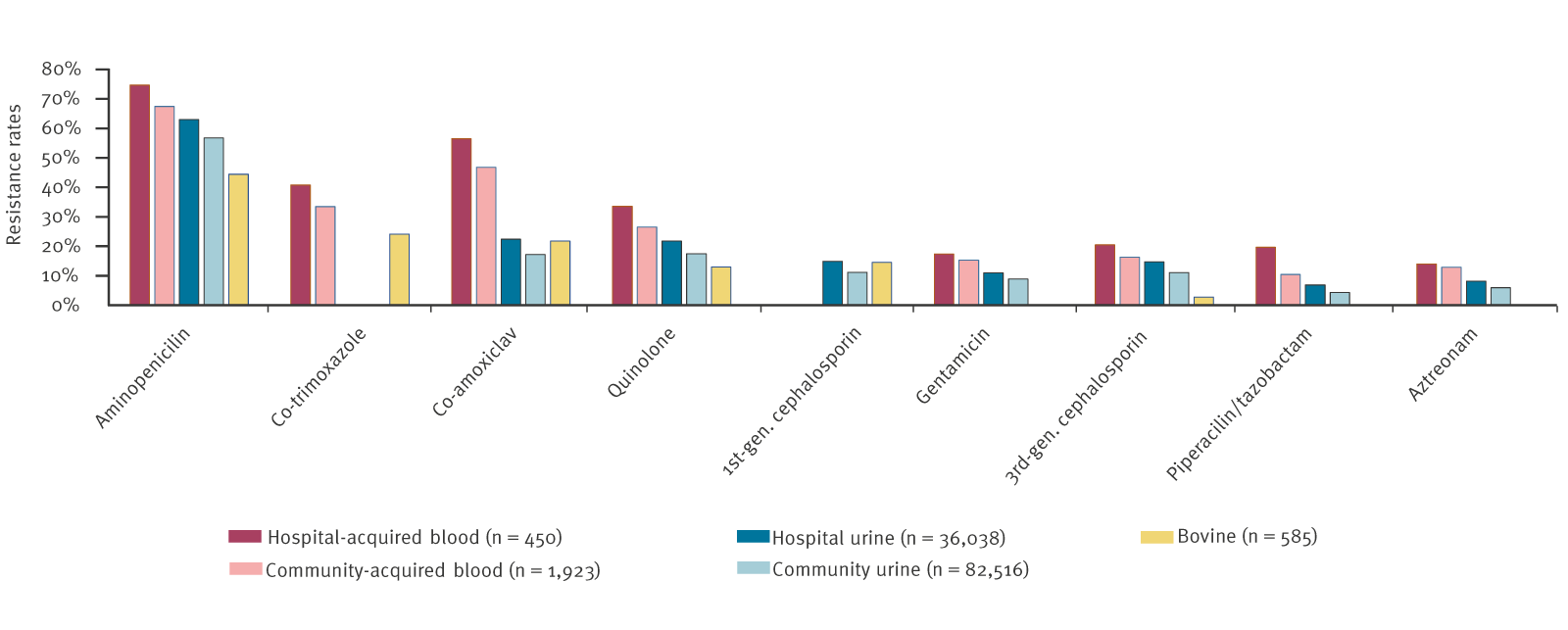2025-06-05 アイルランド・リムリック大学(UL)
<関連情報>
- https://www.ul.ie/news/ul-research-reveals-reduced-antimicrobial-resistance-in-e-coli-cases
- https://www.eurosurveillance.org/content/10.2807/1560-7917.ES.2025.30.13.2400512
2012年から2023年にかけてのアイルランド中西部における抗菌薬適正使用と抗菌薬耐性の減少に関する証拠:ワンヘルスの研究結果 Evidence for antimicrobial stewardship and reduced antimicrobial resistance in the Mid-West of Ireland, 2012 to 2023: findings from a One Health study
James Powell, Santosh Sharma, Alan Johnson, Siobhan Barrett, Caroline Garvan, Nuala H O’Connell, Colum P Dunne
Eurosurveillance Published:03/Apr/2025
DOI:https://doi.org/10.2807/1560-7917.ES.2025.30.13.2400512

Abstract
Background
Escherichia coli, a pathogen commonly infecting humans and bovines, is a prime sentinel indicator and predictor for antimicrobial resistance (AMR). Tracking epidemiological trends of AMR is essential to address this global One Health threat.
Aim
To perform a comprehensive retrospective epidemiological analysis of AMR trends in E. coli isolated from human urine and blood and bovine specimens, and compare with antimicrobial consumption or sales data for humans.
Methods
All E. coli isolates with susceptibility results from human urine (n = 122,419), blood (n = 2,373) and bovine specimens (n = 585) from 2012–23 in the Mid-West of Ireland were analysed. The resistance trends of nine commonly used antimicrobials were compared with their consumption by humans or sales in community and hospital settings.
Results
Over the 12-year period, resistance against common antimicrobials was lowest among the bovine isolates (range: 2–44%). Human urine isolates showed lower resistance (5–59%) than bloodstream isolates (12–69%). There was a downward trend in resistance to all antimicrobials between 2012 and 2023 in the human isolates (p < 0.001), except for piperacillin/tazobactam where resistance increased, in each case correlating with antimicrobial usage. Bovine isolates demonstrated reduced resistance to co-amoxiclav (p = 0.001), with no trend observed for other antimicrobials.
Conclusion
Our data showed reduced resistance to many antimicrobials for E. coli from human and bovine populations in our region. Increased use of ‘preferred’ antimicrobials in humans and reduced use of those ‘to be avoided’ was observed. The findings indicate the emerging effectiveness of AMR strategies and highlight the value of One Health AMR.


